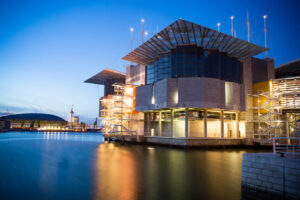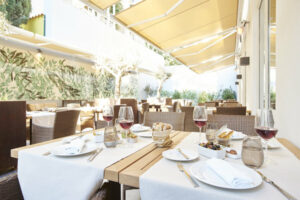Last Updated on November 29, 2025 by Emma Fajcz | Published: November 4, 2018
Mercado da Ribeira in Lisbon, Portugal is a gourmet food hall and is known as one of the liveliest spots in Lisbon. Also known as the Time Out Market, it’s one of the biggest food markets in Lisbon and most popular attractions in the city. However, it can be crowded and hard to navigate, so we’re happy to share our tips for visiting Mercado da Ribeira in Lisbon!
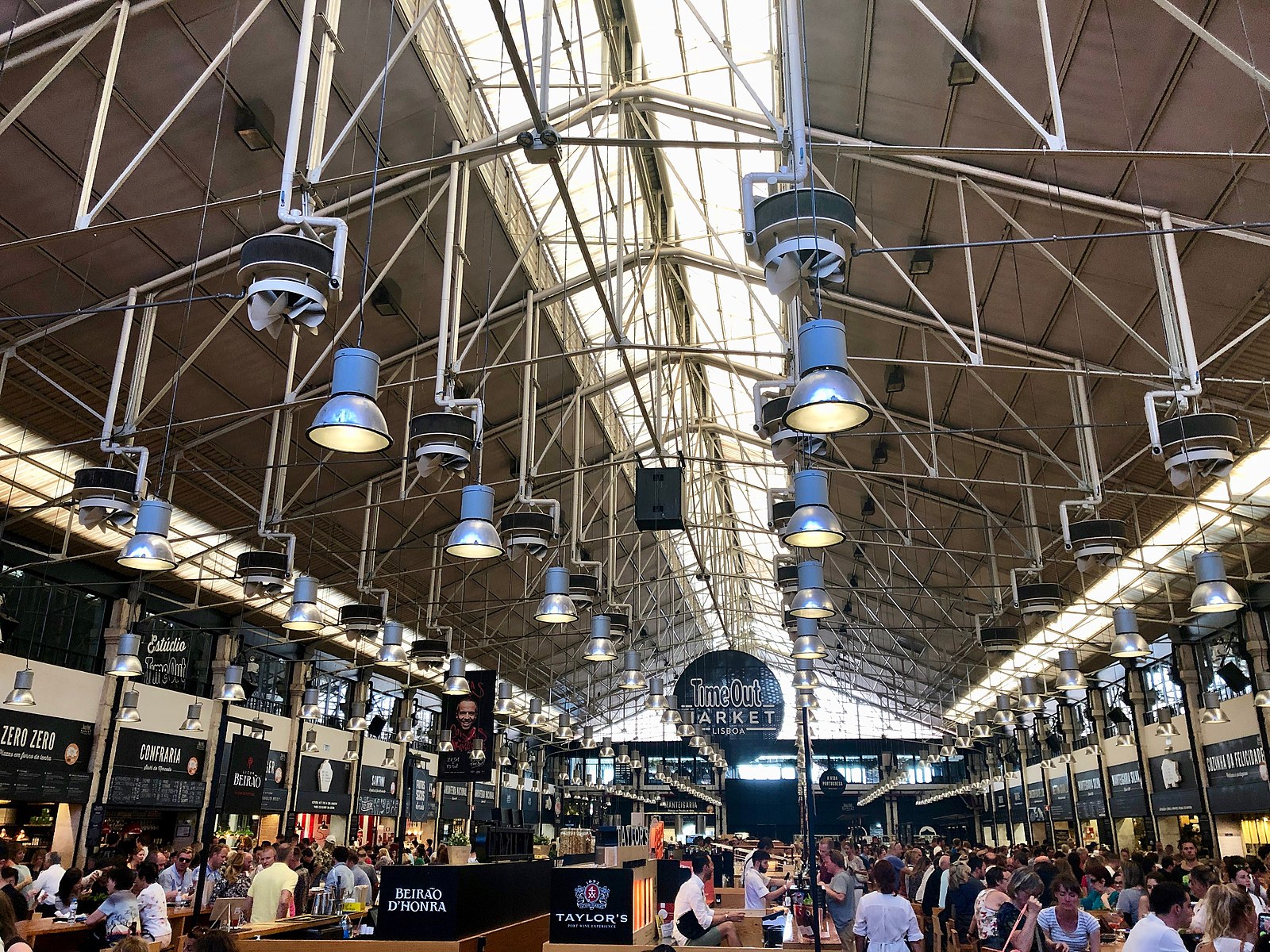
Table of Contents
Why You’ll Love Visiting Mercado da Ribeira
- Biggest Food Market in Lisbon: This bustling shopping area is one of the most popular tourist attractions in the city, but is still worth visiting.
- Lively & Energetic Vibes: This market is bustling with excitement from its opening until late into the night.
- Lots of Food & Drink Options: You can’t make a bad choice when ordering from one of the market’s many restaurant stalls or bars!
Why Is It Called Time Out Market?
The first version of Mercado da Ribeira opened in a different location in the 12th century. By the 17th century, it was one of the most renowned markets in Europe. The current structure was opened in 1882 to house the city’s main wholesale market. After that market moved to a new location, in 2000, business fell off and the building—and the neighborhood around it—became derelict.
It was only in 2014 that the market as we now know (and love) it came into being. And, yes, it’s the same Time Out as the magazine empire. The team that won the concession to take over the market was the same team that founded the Lisbon edition of the magazine.
They asked their food writers and editors to pick the chefs and restaurants that would get space in its stalls. The result is a “curated” collection that includes many staples on the magazine’s “best of” lists.
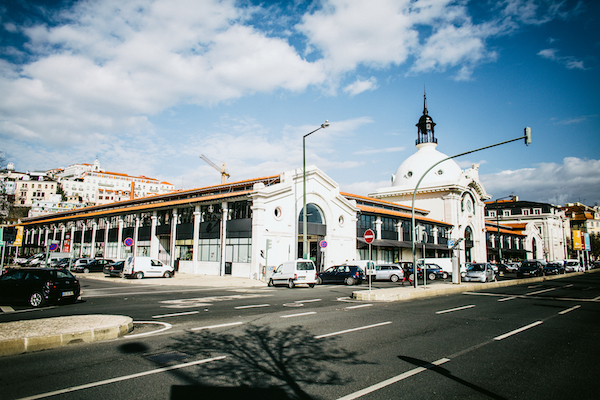
Famous Chefs at Mercado da Ribeira
Several of the country’s best-known chefs, including Henrique Sá Pessoa of the Michelin one-star Alma; Miguel Castro e Silva, the godfather of Portuguese fine dining; and Kiko Martins of the beloved Cevicheria have outposts. They and several other esteemed chefs turn out traditional Portuguese fare (bacalhau, pica-pau, presunto), while other stalls offer American-style hamburgers, sushi, pizza and ice cream.
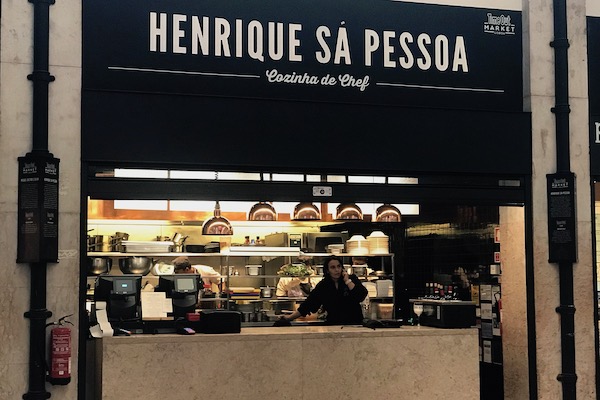
Best Foods to Eat
Here at Devour, our favorite strategy is to go in a group so we can sample many dishes; plus, we like to stick to Portuguese cuisine. The pizza at Zero Zero and the sushi at Confraria are best-in-class, but we come here to taste Lisbon!
Here’s our favorite eats at the Time Out Market:
- Bacalhau à brâs from Castro e Silva (stall 10)
- Famous 64-degree egg from Sá Pessoa (stall 11)
- Buhlão pato rice (cooked with garlic, lemon and coriander) with swordfish from Marlene Vieira (stall 12)
- Roast pork sandwich from Balcão da Esquina (stall 2)
- Fresh-from-the-oven pastel de nata at Manteigaria (stall 49/50)
And while it’s not exactly traditional, the octopus hot dog from Sea Me (stall 8), with an octopus leg in a warm bun, is a novelty worth trying.
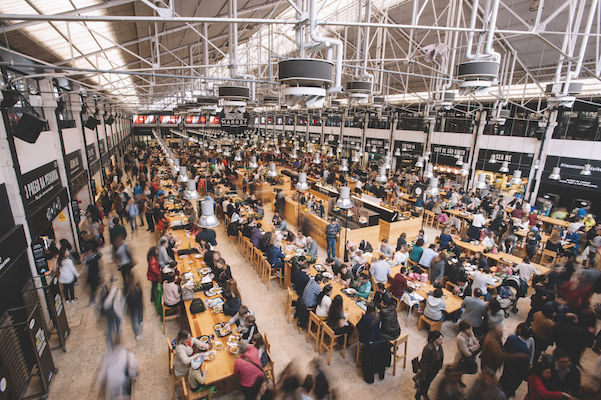
Insiders’ Tips for Visiting
- What to Expect: Time Out Market is loud and chaotic, and it’s all part of the fun!
- Hours: Shortly after the food hall opens at 10 am, it begins filling with people. That continues until closing time (midnight on weeknights, 2 a.m. Thursday–Saturday).
- Best Time to Visit: If you want to avoid the worst crowds, try visiting at an odd hour (like 5 pm) when it’s a bit quieter.
- Save seats before ordering food: Walking around with rapidly cooling plates of food trying to find a seat is no fun. Leave a sweater or jacket on a chair or a low-value possession at a spots at one of the communal tables before you order.
- Is the main hall too chaotic for you? Many of the stalls have counters on the periphery of the market where you can eat while watching the chefs at work. A few of the restaurants also have outdoor seating.

Traditional Food Market
Apart from the main dining hall, there is still a traditional food market where local vendors, some of whom have been here for decades, sell flowers, vegetables, fruit, fish, bread, cheese and other goodies.
We do our own shopping here, as the quality is high, the prices are low, and we like to preserve this little slice of old-world Lisbon.
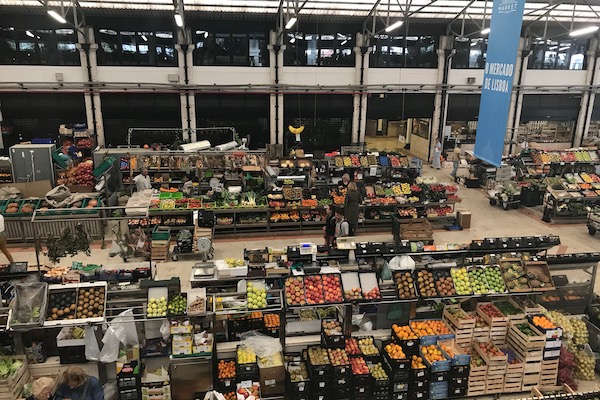
Explore Lisbon’s Food Scene on a Devour Tour
Want to explore Lisbon’s food markets and restaurants with an expert local guide? Save your spot on our Ultimate Lisbon Food & History Tour of Baixa & Chiado tour!
On this tour, you’ll spend a morning uncovering the soul of Lisbon’s historic neighborhoods—Baixa, Chiado, and Cais do Sodré—through its cherished food traditions. With an intimate small group, you’ll visit century-old establishments trusted by generations of Lisboetas and taste dishes that define Portuguese culture. This is more than a food tour; it’s a journey into Lisbon’s culinary heart and soul!
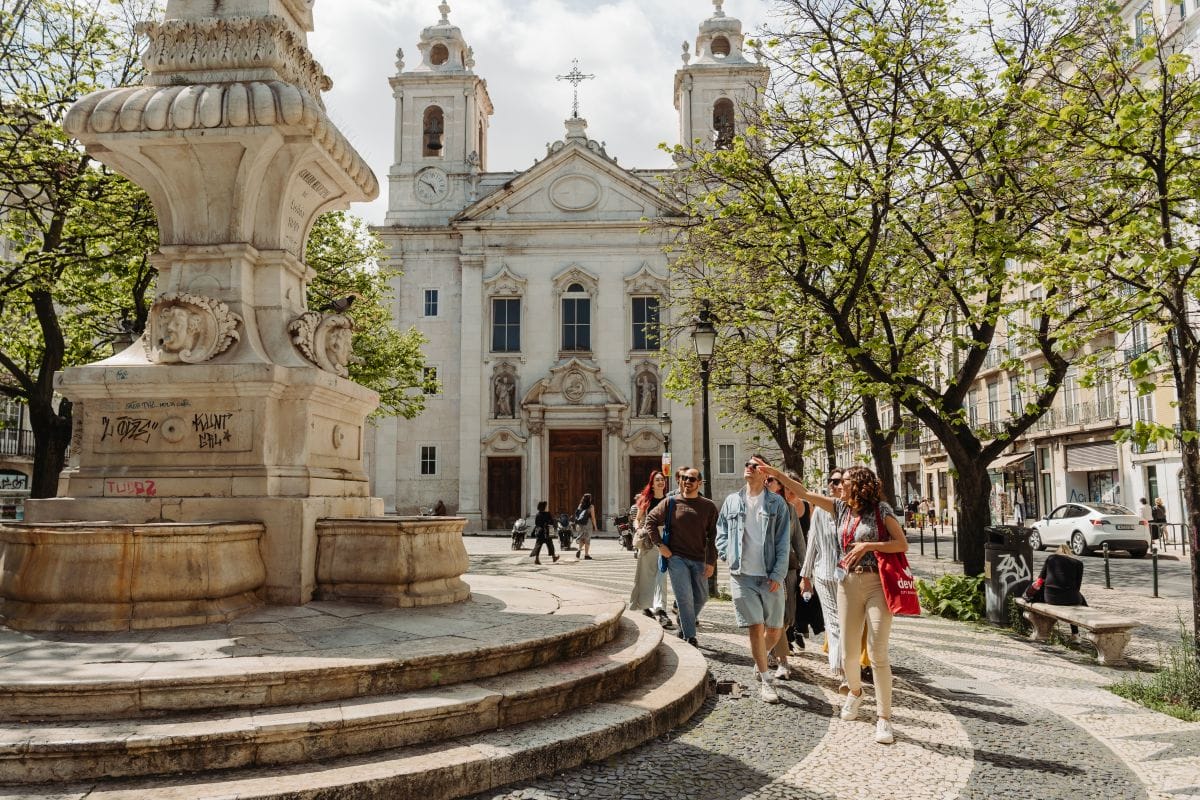
Featured Review: Ultimate Lisbon Food & History Tour
⭐⭐⭐⭐⭐ “This was an *absolutely fantastic* tour with Anastasiia!! I learned so much fascinating history about Lisbon, really enjoyed all of the incredible food, and I am so very happy that I joined this tour. My stomach is very happy. Thank you again so much to Anastasiia and Devour”
– CatherineAC2018 on Tripadvisor
FAQs
Is Mercado da Ribeira worth visiting?
Yes, Mercado da Ribeira (also known as Time Out Market) is absolutely worth visiting. It combines a traditional food market with restaurants and drink stalls, offering everything from fresh produce and local specialties to dishes by some of Lisbon’s top chefs all under one roof.
How do I get to Mercado da Ribeira?
Mercado da Ribeira is located in the Cais do Sodré district, just a short walk from the riverfront. The easiest way to get there is by taking the metro to Cais do Sodré station, which is directly across the street from the market. It’s also well-connected by bus, tram, and train.
Is there live music at Mercado da Ribeira?
Yes, Mercado da Ribeira often hosts live music and cultural events, especially in the evenings and on weekends. Performances range from local bands and DJs to traditional Portuguese music, adding to the lively atmosphere.

